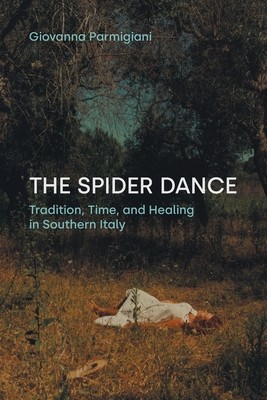
- We will send in 10–14 business days.
- Author: Giovanna Parmigiani
- Publisher: Equinox Publishing
- ISBN-10: 1800505132
- ISBN-13: 9781800505131
- Format: 15.6 x 23.4 x 1.6 cm, minkšti viršeliai
- Language: English
- SAVE -10% with code: EXTRA
Reviews
Description
Based on ethnographic research among contemporary Pagan communities in Southern Italy (Salento, Apulia), The Spider Dance challenges (uni)linear ideas and experiences of time and temporality by showing the interconnectedness of alternative historicities, healing, and place-making among persons engaged in reviving, continuing, or re-creating traditional Pagan practices. The Spider Dance looks at local Pagans and at their ritual practice and interpretation of the traditional dance and music called pizzica. Pizzica is associated with tarantismo, a phenomenon present in that area for hundreds of years and attested until the second half of the XX century. Affecting mostly (but not only) women, tarantismo has been described in the form of malaise and physical suffering thought to be provoked by the bite of tarantula spiders and cured with pizzica music and dance. At the turn of the century tarantismo disappeared and new forms, called neotarantismi, emerged. The Spider Dance describes a novel "spiritual" form of neotarantismo and highlights its connections with contemporary forms of magic and healing. The relevance of The Spider Dance is not limited to a description of particular Pagan groups and practices. It also makes some key practical and theoretical contributions to the anthropological study of magic, of contemporary religions, of "historicities," and to scholarly debates around complementary medicine and "well-being," in Italy and abroad.
EXTRA 10 % discount with code: EXTRA
The promotion ends in 22d.23:28:02
The discount code is valid when purchasing from 10 €. Discounts do not stack.
- Author: Giovanna Parmigiani
- Publisher: Equinox Publishing
- ISBN-10: 1800505132
- ISBN-13: 9781800505131
- Format: 15.6 x 23.4 x 1.6 cm, minkšti viršeliai
- Language: English English
Based on ethnographic research among contemporary Pagan communities in Southern Italy (Salento, Apulia), The Spider Dance challenges (uni)linear ideas and experiences of time and temporality by showing the interconnectedness of alternative historicities, healing, and place-making among persons engaged in reviving, continuing, or re-creating traditional Pagan practices. The Spider Dance looks at local Pagans and at their ritual practice and interpretation of the traditional dance and music called pizzica. Pizzica is associated with tarantismo, a phenomenon present in that area for hundreds of years and attested until the second half of the XX century. Affecting mostly (but not only) women, tarantismo has been described in the form of malaise and physical suffering thought to be provoked by the bite of tarantula spiders and cured with pizzica music and dance. At the turn of the century tarantismo disappeared and new forms, called neotarantismi, emerged. The Spider Dance describes a novel "spiritual" form of neotarantismo and highlights its connections with contemporary forms of magic and healing. The relevance of The Spider Dance is not limited to a description of particular Pagan groups and practices. It also makes some key practical and theoretical contributions to the anthropological study of magic, of contemporary religions, of "historicities," and to scholarly debates around complementary medicine and "well-being," in Italy and abroad.


Reviews